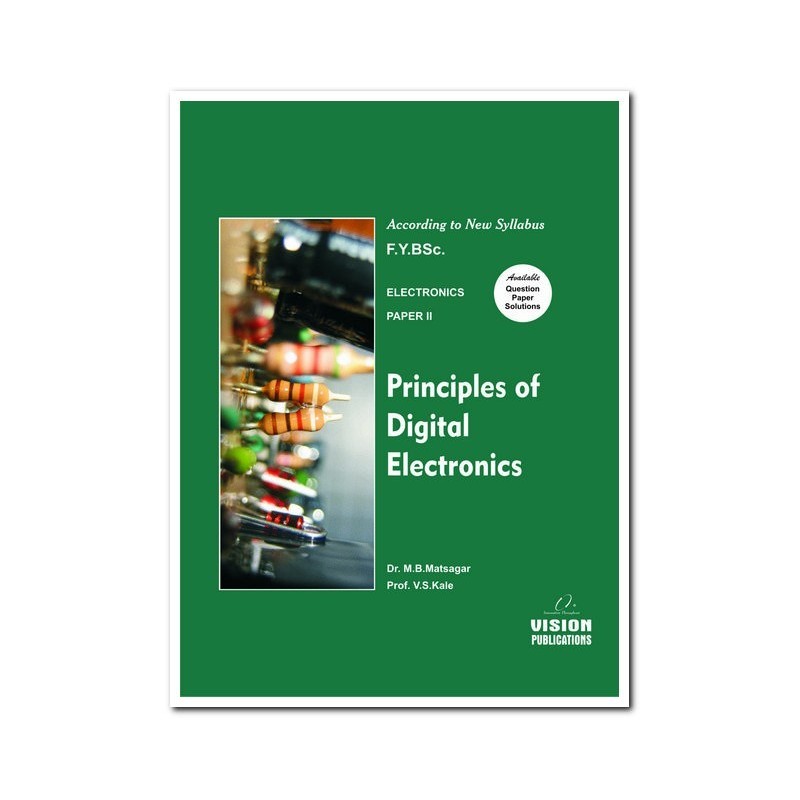Email: tovisionpune@gmail.com



Includes: Number Systems, Logic Gates, Boolean Algebra, Arithmetic Circuits, Combinational Circuits, Sequential Circuits, Logic Families, Semiconductor Memories
Contents
1. Number Systems
1.1 Introduction
1.2 Objectives
1.3 Decimal number system
1.4 Binary number system
1.5 Sign-magnitude representation
1.6 Octal number system
1.7 Hexadecimal number system
1.8 Digital codes
2. Logic Gates
2.1 Introduction
2.2 Objectives
2.3 Positive and Negative logic
2.4 Truth-table
2.5 Basic logic gates
2.6 Derived gates and universal gate
2.7 NAND as a universal gate
2.8 NOR as a universal gate
2.9 Applications of EX-OR gate
3. Boolean Algebra
3.1 Introduction
3.2 Objectives
3.3 Constructing logic circuit
3.4 Boolean algebra rules and laws
3.5 De Morgan's theorems
3.6 Universal gates
3.7 Standard representation for logical functions
3.8 Truth table and boolean expression
3.9 Simplification of boolean expression
4. Arithmetic Circuits
4.1 Introduction
4.2 Binary addition
4.3 Binary substraction
4.4 Unsigned and signed binary numbers
4.5 Signed magnitude binary numbers
4.6 One's complement representation
4.7 Two's Complement representation
4.8 The half adder
4.9 Full adder
4.10 Half subtractor
4.11 Full subtractor
4.12 Parallel adder
4.13 Universal adder / subtractor
4.14 Digital comparator
5. Combinational Circuits
5.1 Introduction
5.2 Multiplexers
5.3 Demultiplexers
5.4 Encoders
5.5 Decoders
5.6 Binary to BCD converter
5.7 Seven segment displays and decoders
5.8 Keyboard encoder
6. Sequential Circuits
6.1 Introduction
6.2 Objectives
6.3 Flip-flop
6.4 D flip-flop
6.5 T-flip-flop
6.6 JK flip flop
6.7 Master slave flip-flop
6.8 Applications of flip-flops
6.9 Counters
6.10 Types of counters
6.11 Counter applications
6.12 Finite state machines (FSM)
6.13 Shift registers
6.14 Types of shift registers
6.15 A universal shift register
6.16 Applications of shift register
7. Logic Families
7.1 Introduction
7.2 objectives
7.3 Integrated Circuit chips (ICs)
7.4 Digital logic families
7.5 IC parameters
7.6 Concept of source and sink current
7.7 TTL gates
7.8 Three state logic
7.9 Wired OR Operation
7.10 CMOS gate
7.11 CMOS device handling precautions
7.12 Interface between TTL and CMOS
8. Semiconductor Memories
8.1 Introduction
8.2 Objectives
8.3 Digital computer
8.4 Bit, Byte and Word
8.5 Classification of memory
8.6 Types of RAM (Read / Write) semiconductor memory
8.7 ROM